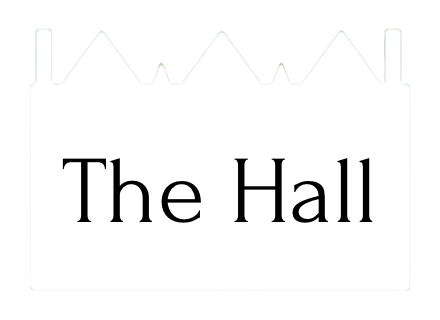Who Were The Halls?
The Hall family were wealthy landowners and clothiers. They owned the land that the current Hall Estate sits on and a number of mills within the local area as far back as 1170. In around 1610, John Hall and his wife Elizabeth built The Hall on the foundations of their Medieval house to reflect the growing success of their mills and estates.
The river opposite The Hall fuelled the family’s mills by providing water for the fulling process and later powering the looms, creating a perfectly contained domain for industrial success. As clothiers, they were the middle men who handled the entire textile making process from managing the sheep farmers and shearers to organising the weavers, fullers and final buyers.
Suggestions have been made that the rebuilding of The Hall was also in celebration of their son, Thomas’ betrothal to Catharine Seymour, daughter of Sir Edward Seymour of Berry Pomeroy Castle in Devon, a very influential alliance.
The Halls had a number of properties, including Abbey House in Bath and Ford Farm north of Bradford on Avon, which would have been used as alternative accommodation whilst renovations took place at The Hall.
Elizabeth and their children outlived John and continued to live at The Hall.
Their son Thomas lived nearby and worked as a Commissioner for the King within the county of Wiltshire. During the Civil War (1642 to 1651), Thomas enlisted men to fight for the Royalists and was rewarded for his success with a knighthood, becoming Sir Thomas Hall. However, in 1647 the Royalists lost their cause and Parliament fined Thomas £660.
Thomas and Catharine’s son, another John, was the last of the Hall family to reside at The Hall. He brought numerous local properties, including nearby Great Chalfield Manor and continued to rent out the mills in Bradford on Avon to local tradesmen. John was married twice, his second wife being Elizabeth Thynne, sister of the renowned rake Thomas Thynne of Longleat. John founded the Alms Houses in the town (which today still display The Hall coat of arms) and endowed it with income from his estates. He died in 1710 and The Hall was passed to Rachel Baynton, his illegitimate daughter.
Daniel Defoe visited Bradford on Avon in the early 1700s. He commented: "They told me at Bradford that it was no extra-ordinary thing to have clothiers in that country worth, from ten thousand to forty thousand pounds a man [equivalent to £1.3M to £5.3M in 2007], and many of the great families, who now pass for gentry in those counties, have been originally raised from, and built up by this truly noble manufacture."

